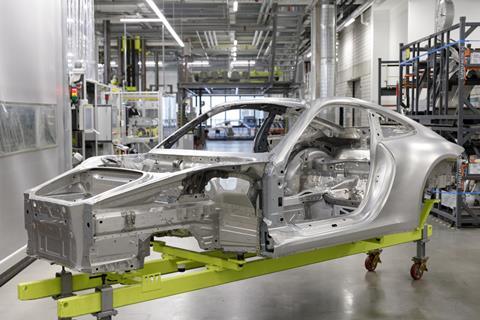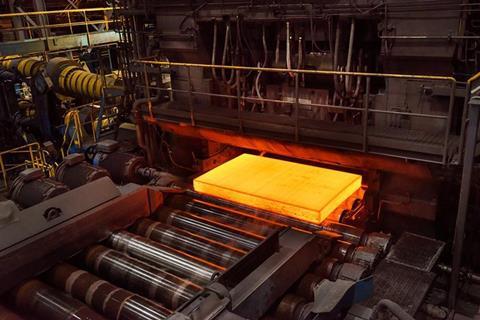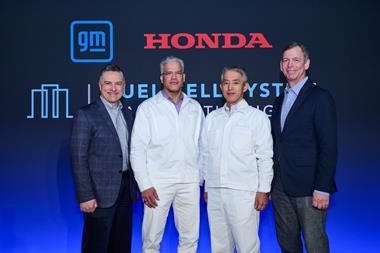With steel manufacturing being a major contributor to carbon footprints across automotive, Porsche moves to scale up green steel production with H2 Green Steel deal
Porsche will begin using CO2-reduced (or green) steel, along with several of its direct suppliers from 2026 as part of an agreement reached with Swedish manufacturer, H2 Green Steel (H2GS). H2GS will supply Porsche and select production material suppliers with low-emission steel just one year after the sustainable steel producer launches operations in Boden, Sweden.
The collaboration aligns with the carmaker’s central objective of sustainability and accords with its latest annual report which recapitulates “[sustainability] is anchored in the organisation with a clear internal structure and defined responsibilities. This way, the Porsche AG Group is able to address material topics systematically and effectively.”

H2 Green Steel’s production methods: Hydrogen, renewable electricity EAF and mass-electrolysis
H2GS is pioneering a more environmentally conscious approach to steel production, aiming to reduce CO2 emissions by as much as 95%, according to the company.
Unlike traditional methods using coal, H2GS utilises hydrogen generated from renewable electricity. The company employs giga-scale electrolysis, hydrogen-based direct reduction and electric arc furnace (EAF) steelmaking in its eco-friendly steel manufacturing process.
Up to 35,000 tons of this low-emission steel are slated for use in the series production of Porsche vehicles annually.
Traditional automotive steel production a significant CO2 contributor
With 54% of the average vehicle being composed of steel according to the American Iron and Steel Institute, and steel production accounting for 11% of total carbon emissions according to Carbon Brief, traditional automotive production techniques act as a major contributor to the net carbon footprint output by industry. Green steel is a major and growing part of the effort to render automotive production (and supply chains) sustainable.
Barbara Frenkel, Executive Board Member for Procurement at Porsche AG, comments: “Energy, processes and materials account for a significant share of CO2 emissions […]. That is why we want to increase the use of recycled materials and green electricity in the production processes of direct suppliers as part of our decarbonisation efforts.
“Porsche is working towards a carbon-neutral balance sheet across the value chain for its cars by 2030. CO2-reduced steel plays a key role in our sustainability strategy. With the steel from H2 Green Steel, we aim to further reduce the CO2 emissions caused by this important material.”
The growth of green steel in automotive production and issues of ambiguity
Porsche’s collaboration with H2GS is a significant move for sustainable steel in automotive production, and marks a steady build up in OEMs moving in this direction.

Swedish steel producer SSAB, recently announced its partnership with Spanish tier-one automotive supplier, Gestamp, in an agreement to provide fossil-free steel solutions for body-in-white and chassis systems. The collaboration will see SSAB introduce fossil-free steel to the market on a commercial scale by 2026.
The growing demand for sustainably produced vehicles has also led companies like Volvo to set ambitious CO2 reduction targets and transition to emission-free materials.
Recent efforts in sustainable steel for automotive are not confined to its production stage alone and span across the material’s lifecycle. An example of this can be seen in the European arm of global steel and mining company, ArcelorMittal which has established a far-reaching circularity agreement between its Flat Products unit and tier 1 automotive supplier Gestamp, with the goal of enhancing sustainable steel throughout the automotive value chain. The core aim of this collaboration is to encourage the recycling of steel scrap and facilitate the large-scale production of steel products with low CO2 emissions, incorporating a substantial amount of recycled content.
C02 emissions and ‘footprints’ serve as key markers as to what constitutes carbon output, but unanimous or even majority definitions of ”green steel” have not yet been reached, leading partnering companies like SSAB and Volvo to focus on aspects of certification transparency and labelling in achieving sustainable outcomes in automotive production.
There is a clear pivot towards sustainable steel, materials and practices towards net zero across automotive production and Porsche’s latest collaboration with H2GS marks one of the latest efforts in the industry. The next ten years will see a major ramp up in widespread sustainable practices as OEMs amplify their competition for triple bottom lines






































No comments yet